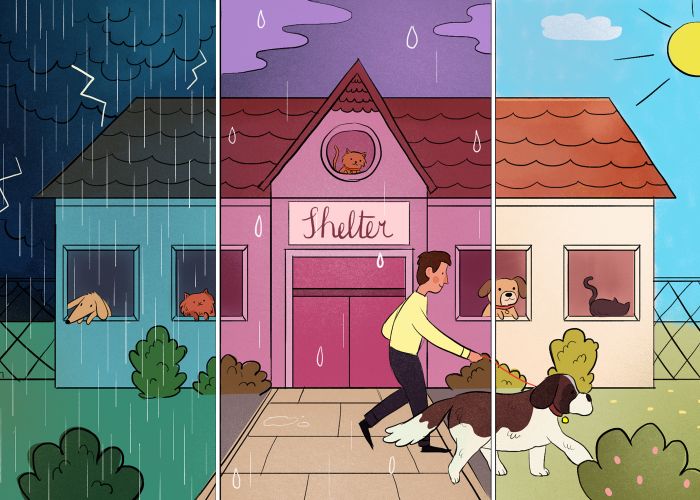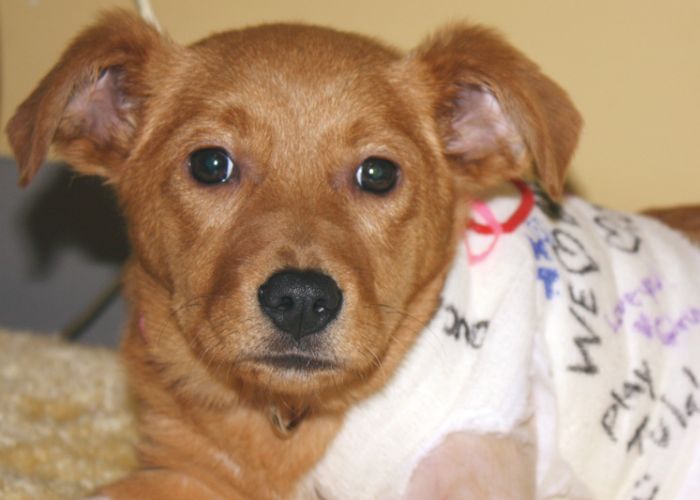Identifying and treating mouths full of hurt
Cats with dental problems may be suffering in silence
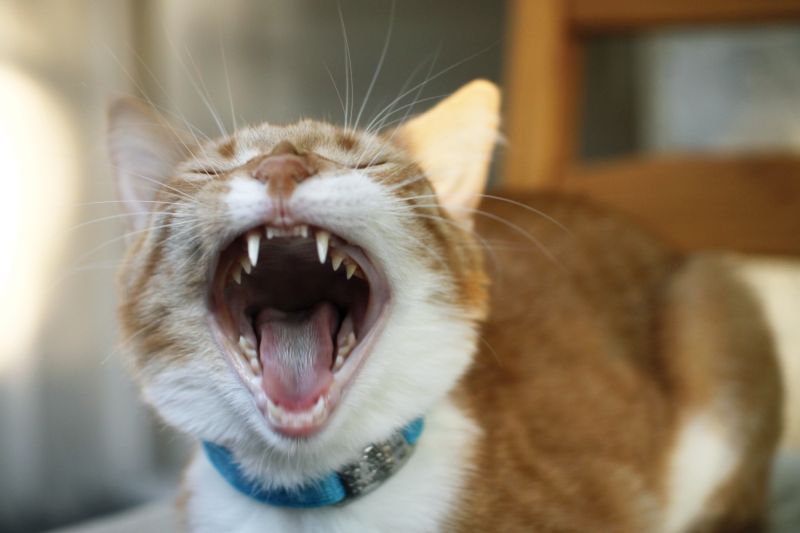
Download a printable fact sheet version of this article.
It wasn’t that long ago that we failed to understand pain in our companion animals. You may recall veterinarians in the past saying things like, “Animals don’t feel pain like we do.”
In fact, when I went to veterinary school in the late-1980s, we weren’t taught to provide pain relievers for animals after common procedures such as spay/neuter or dental work, including extraction of teeth. Typically, our patients received short-acting pain medicine in the hospital, and then were sent home to rest and recover.
A few years later, as a young veterinarian, I attended the American Veterinary Medical Association’s annual continuing education convention. That year, a small group of veterinarians convened to discuss pain in animals. It was there that I heard veterinary anesthesiologist Charles Short say something profoundly important. He stood up, shook his fist in the air and emphatically told the group, “Darn it, if it looks like it hurts, it hurts!”
This moment comes back to me when I think about the issue of toothache. Most of us have had one, possibly accompanied by sensitivity to hot and cold, or a stabbing pain when you tried to eat. Now imagine that multiple teeth in your mouth are hurting and you have no way to tell someone. How would that affect you? How would others know you were in pain if you couldn’t tell them?
The painful tooth
I had an “aha” moment of my own in 1992, when I worked with a woman I’ll call Mrs. Jones (not her real name) and her beloved cat Tiger. Mrs. Jones had come to me for a second opinion after another veterinarian had told her that Tiger needed to have all his teeth extracted. She was extremely nervous about the procedure.
Tiger was a friendly 10-year-old cat whose physical examination was unremarkable other than a scruffy hair coat. His bloodwork was all normal. But when I opened his mouth, there was a foul odor, and I saw that his gums were bright red. He had some accumulations of tartar on his teeth, and I could feel the lymph nodes under his jaw were a little swollen.
I took a moist cotton swab and gently probed around as this sweet cat sat patiently and allowed me to look more closely at his teeth. Pus oozed from the edges of his gums. Amazingly, he didn’t really react much, but his teeth and gums were all severely infected and inflamed. I stroked the cat’s neck, then gently told Mrs. Jones what I knew she did not want to hear: Her cat probably did need to have all of his teeth pulled.
Naturally, she had a lot of questions. Wouldn’t that be incredibly painful? Would he ever be able to eat again? I explained that he would be fine—in fact, he would be much better off without the infected teeth, which might ultimately affect his entire system.
She held her cat in her arms and sobbed for a while, then said she would think about it. A couple of days later she called and said she had decided to have the work done. I did it that very day, extracting all of Tiger’s teeth.
She called me that evening, sounding hysterical. I could barely understand what she was saying at first, because she was sobbing. Finally I could decipher her words: She was repeating over and over, “Dr. Griffin, he’s eating dry food. Dr. Griffin, he’s eating dry food.”
I was worried when I heard that—I had told her not to feed him dry food in order to allow his mouth to heal. But she clarified: “Dr. Griffin, you don’t understand: My other cat eats dry food, and there’s always a bowl of dry food down and he hasn’t touched that bowl of dry food in the last five years, and he came home just now and he’s eating the dry food.”
Imagine the pain that Tiger must’ve been in to feel better the very evening of having all of his teeth pulled—better enough to crunch on some dry food with his freshly wounded gums. All he had eaten for the past five years was canned food—not because he was a finicky eater, but because it hurt too much to eat dry food. Amazing.
I think of Tiger often, knowing that many cats suffer in silence like he did, showing very few outward signs of pain. It is up to us to recognize it. If it looks like it hurts, we must know that it does!
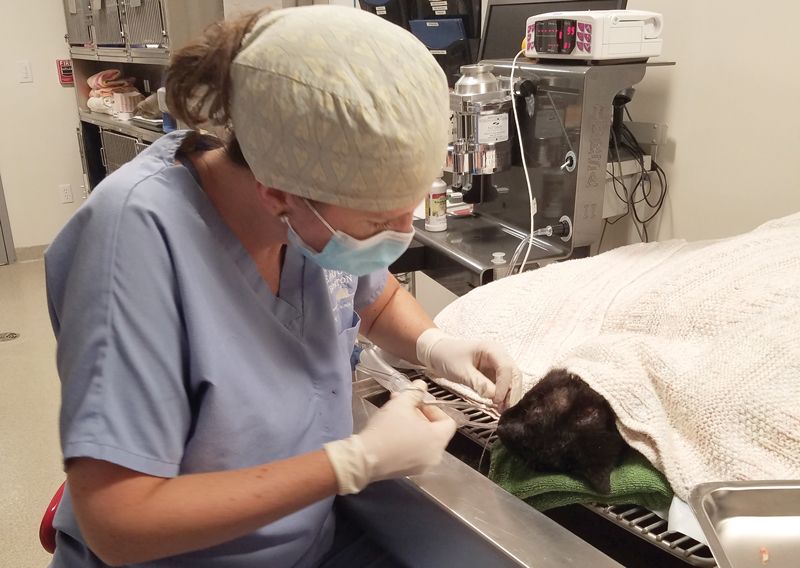
What causes feline mouth pain?
There are several causes of oral pain in cats, including periodontal disease, tooth resorption and stomatitis. If left untreated, these conditions result in chronic pain, and infections can eventually affect the cat’s entire system, even leading to permanent organ damage.
Periodontal disease is common in adult cats and may range from mild to severe. This condition involves inflammation and infection of the gums (gingivitis), which frequently progresses to affect deeper tissues surrounding the teeth. If unchecked, progression of periodontal disease can ultimately result in recession of the gums, bone loss and tooth root infection.
Some cats experience tooth resorption, a poorly understood condition that may be related to vitamin D levels in cats. In this case, cavity-like lesions form in the teeth of adult cats. These lesions become painful as they progress and expose the pulp of the tooth. In some cases, affected teeth will become so weakened that they break off.
Stomatitis (inflammation of the mouth) is another painful oral condition. Although it is less common than periodontal disease and tooth resorption in pet cats, it’s more commonly seen in cats who’ve shared confined space with many other cats, such as cats originating from hoarding situations and those housed long-term in large group settings. Affected cats experience widespread oral inflammation around the teeth, which often extends into the back of the mouth (pharynx) and along the sides of the tongue. The exact cause is unknown, but the vast majority of affected cats are chronic carriers of calicivirus; the virus may play a role in this chronic inflammatory process. In severe cases, the affected tissues proliferate and ulcerate and may bleed spontaneously.
Stomatitis is considered to be a disease of adult cats, but juvenile hyperplastic gingivitis occurs in adolescent cats (less than 1 year old). In these cases, bright red inflammation of the gum line surrounding healthy-appearing teeth occurs, usually unaccompanied by other clinical signs. It is unknown if or how often this condition might progress to stomatitis later in life.
Cats experiencing these conditions may show their discomfort in a number of ways. Some cats with dental disease and/or stomatitis may have obvious signs of disease, but in other cases, signs may be subtle even when disease and pain are severe. Keep an eye out for signaling behaviors and other physical signs, including:
- Bad breath
- Inflamed gums
- Tartar buildup
- An unkempt coat, or matting of the hair, especially along the back and rump (this occurs when the cat fails to groom because it hurts his sore mouth)
- Drooling of saliva; salivary staining around the mouth (may be blood-tinged)
- Poor appetite (in some cats, “finicky” eating or choosing only to eat canned foods may signal pain rather than pickiness)
- Other changes in eating behaviors such as moving food around in the mouth without chewing, swallowing food whole or dropping food
- Teeth chattering and/or lip smacking
- Weight loss
- Pawing at the face
- Facial swelling
- Sneezing and/or nasal discharge
- Changes in behavior, such as social withdrawal, reluctance to cheek rub, persistent hiding or aggression
Some cats ... may have obvious signs of disease, but in other cases, signs may be subtle even when disease and pain are severe.
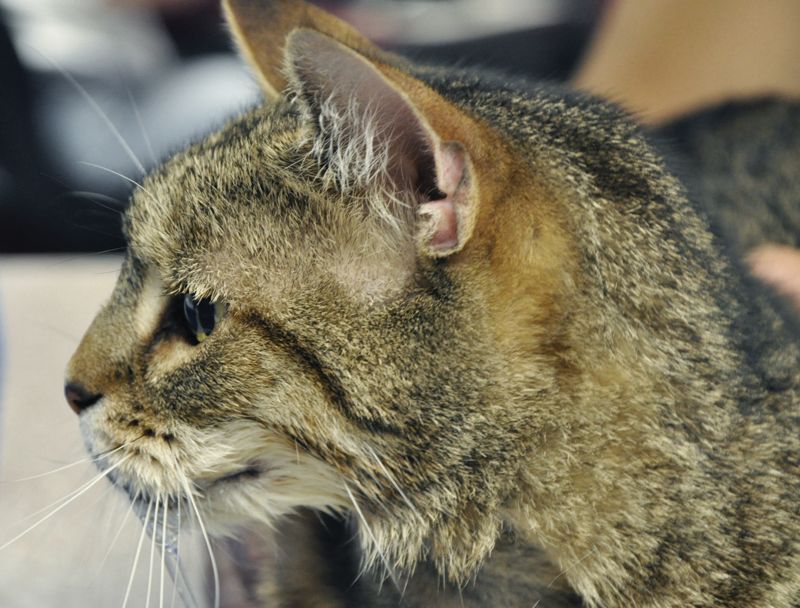
What can we do about it?
A cat suspected of having oral health problems should be examined by a veterinarian, who will likely be able to make an initial assessment by performing an oral exam. Examining the mouth, though, has some limitations, because it’s impossible to thoroughly visualize and inspect all oral structures when the patient is awake. Still, it should be possible to determine the general condition of the cat’s mouth and the need for a more complete oral evaluation and treatment.
Thorough examination can only be performed with the patient under general anesthesia. Dental X-rays will provide the most definitive insight. For periodontal disease and tooth resorption, treatment generally involves removal of severely affected teeth together with treatment of bacterial infection with antibiotics. Medications are also used to control pain before and after surgery until the mouth has healed.
Stomatitis can be more challenging to treat, and it may or may not be accompanied by concurrent periodontal disease or tooth resorption. Though we don’t fully understand why, the majority of cats will greatly benefit from having most or all of their teeth extracted. In some cases, the incisors and canine (fang) teeth can be spared. Antibiotics and pain medications are used to control bacterial infection and pain. Stomatitis resolves in approximately 80 percent of patients following full mouth extractions. Some cases of stomatitis, though, will persist, and additional anti-inflammatory medications will be needed to control the inflammation long-term.
In most cases, cats recover from dental procedures quickly and feel much better within a few days. Caregivers often report that their kitties are more playful and active than they have been for a long time.

Making dental treatment a priority
It’s no secret that providing dental treatment can be expensive and time consuming. These cases often get put on the “back burner” and ignored unless cats display overt signs of pain.
It is important, however, to recognize that many cats are truly suffering in silence. Raising awareness about these painful conditions is important, and shelters can play a role by providing good information to their cat adopters. Some new cat owners (or even experienced cat owners!) may be unaware of their cat’s dental needs, but when caregivers recognize that cats may develop these issues, they can learn to be alert and respond to signs.
If shelters house cats with dental disease and/or stomatitis, they should have a plan in place for providing treatment. Keep in mind that cats with bad breath and oral disease are often overlooked for adoption. Performing the necessary oral care may not only be their ticket to freedom from pain, but to a forever home.
- Teach staff the subtle signs of oral pain. When cats have an unkempt hair coat, a picky appetite or drool-stained lips, be sure to check their mouths for signs of inflammation!
- Keep in mind that cats from hoarding situations and those living in large colony settings long-term are at greater risk and should be monitored regularly for signs of dental problems.
- Initiate a program to raise money for a dental unit and hire a veterinarian to perform dentistry in house.
- Collaborate with local veterinarians who might provide lower-cost services to shelters for cats in need.
- Seek sponsors for cats who need dental care. Appeal to kindhearted individuals to offer support for kitties in need of dental care.




